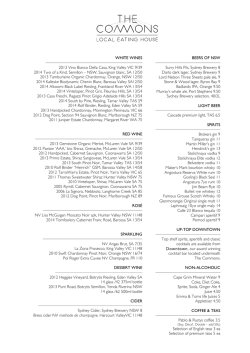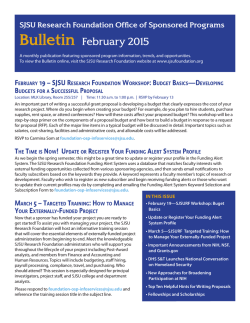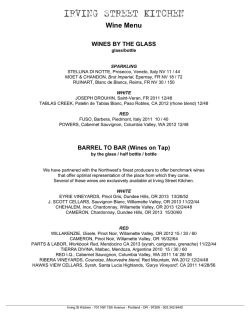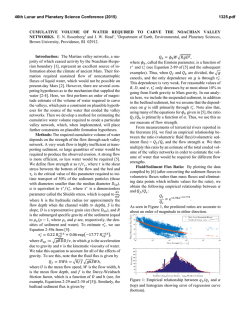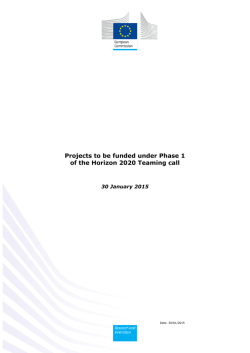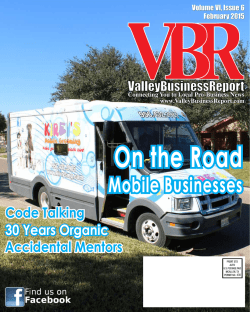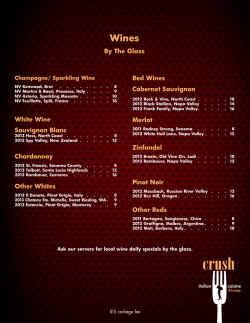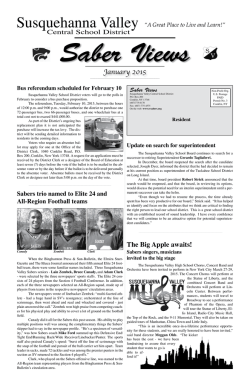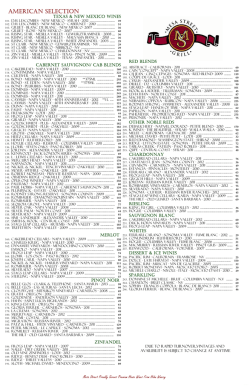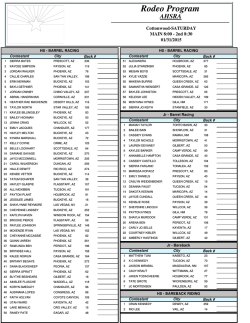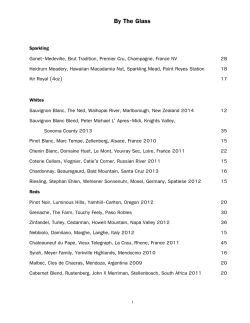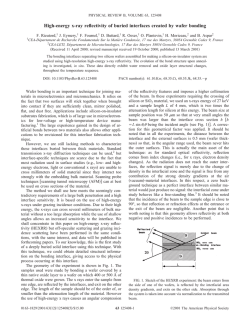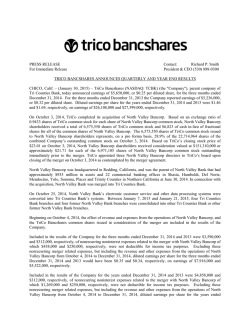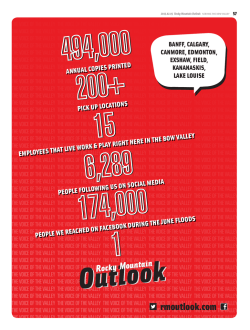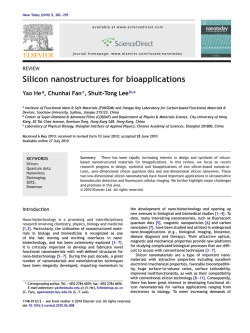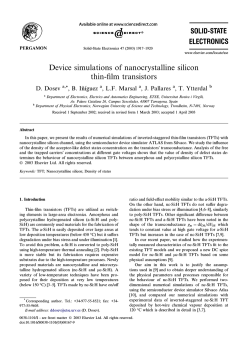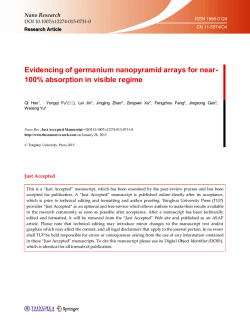
(SJSU), established in 18 - Charles W. Davidson College of
CHARLES W. DAVIDSON COLLEGE OF ENGINEERING ENGINEERING 2015 PLAN Background San José State University (SJSU), established in 1857, is the oldest public institution of higher education in the West. Located in Silicon Valley, SJSU started its first engineering program in 1946. Since then, our region has changed from an agricultural valley to the high-technology center of the world. As Silicon Valley evolved, so did SJSU’s Charles W. Davidson College of Engineering. With nearly 5000 students, the College is now the largest provider of engineers to Silicon Valley. Its programs have been widely recognized and have received consistently top rankings from U.S. News and World Report. Being the only public engineering school in Silicon Valley, the College has helped many people throughout the region receive an engineering education, providing opportunities that might not otherwise have been available. Our graduates have become critical contributors to the development of Silicon Valley: starting new companies, advancing new technologies, and building critical infrastructure. Many of them have become leaders in technology, business, and the community. As Silicon Valley evolves and looks toward the future, so must SJSU’s Davidson College of Engineering. Further, as the 21st century unfolds, technology will play an increasingly central role in addressing monumental challenges across the globe such as climate change disruptions, sustainable energy, and improved healthcare. The ENGINEERING 2015 PLAN is a step in that direction. Building upon the success of 2005’s “Engineering the Vision” plan, Engineering 2015 outlines goals and provides measurements to guide our collective efforts in the coming years. Process The Engineering 2015 Task Force In Fall 2009, Dean Wei established the Engineering 2015 Task Force, a broadly representative group comprised of 15 members drawn from the College’s administrators, faculty and staff, industry, and students. The Task Force served as an engagement team, gathering stakeholders to explore new possibilities while affirming our unique values and mission. Membership Emily Allen (Associate Dean) Ricardo Duque (Graduate Student) Julio Garcia (Faculty) Ahmed Hambaba (Associate Dean) Jeanne Linsdell (Lecturer) Juneseok Lee (Faculty) Mallika Keralapura (Faculty) Melanie McNeil (Faculty) Nicole Okamoto (Faculty) Guna Selvaduray (Former Associate Dean) Simon Shim (Faculty) Reuben Thibodeau (Undergraduate Student) Jacob Tsao (Faculty) John Turner (Industry) Lilly Wilderman (Staff) SJSU Engineering 2015 Plan, Page 1 Inclusive open communication and collaborative processes Envisioning a better future for the College is an invigorating experience. To shape such a future, requires broad participation and extensive dialog among the College’s stakeholders. Toward this end, the Task Force has undertaken a variety of engagement formats to: solicit ideas from faculty, administrators, staff, alumni, students, and industry partners, through inclusive discussion formats and conversational structures that encourage creative thought; provide multiple opportunities for discussion, feedback, and reactions to ideas; and conduct research (challenges of America’s higher education, comparative practices of other universities, Silicon Valley trends, SJSU issues, surveys of our stakeholders, etc.). During a two-year period (2009-2011), the Task Force held seven open forums as well as 20 team meetings with faculty, chairs, staff, students, and industry representatives. It designed and distributed surveys, receiving 210 responses from faculty, staff, students, alumni, and employers. Vision, Mission, and Value Distinctiveness Silicon Valley connection and spirit Diversity and global engagement Hands-on education Survey results revealed a great pride in the distinctiveness of our identity as the only public engineering school in Silicon Valley. Our education opens the door of opportunities to many young people (often from middle-class and working-class families) to enter the high-tech, forward-looking world of Silicon Valley. Local innovators constantly develop new technologies and use them in ways that would not have been imagined just a few years ago. This is the place where the future is envisioned and born. Respondents also agreed that our College community reflects Silicon Valley’s broader diversity. Such diversity means we interact on a personal level with people from different ethnic and cultural backgrounds, and learn from them about different ways of thinking as well as different ways of relating to one another. This learning helps us to better understand people and to more effectively work and live in the ever more interdependent world of the 21st century. Finally, survey responses noted our College’s distinctive focus on hands-on learning, one that complements students’ theoretical studies with laboratory and practical work outside the classroom. This focus reflects our thinking that students learn best when they receive opportunities to integrate theories and practice. Vision As part of Engineering 2015, we reviewed our vision statement (developed as part of the College’s 2005 “Engineering the Vision” plan): SJSU Engineering 2015 Plan, Page 2 To be an inclusive learning community that empowers its students to better the world through innovative applications of engineering knowledge and skills. The Task Force affirmed that this Vision Statement continues to offer a meaningful and useful framework for our activities. Mission The Task Force also reviewed our Mission Statement: To educate new engineers who are technically excellent, globally informed, and socially responsible. The Task Force agreed that this statement also reflects our contemporary thinking. Our graduates must possess not only excellent technical skills but also social responsibility and a global outlook. Value The value that underpins our work is: Excellence through head, heart, and hands (three H’s). It is our commitment to take actions, informed by integrated intelligence and passion, to make a distinctive impact. SJSU Engineering 2015 Plan, Page 3 ENGINEERING 2015 PLAN – Engineering for Silicon Valley and a Better World Three strategic priorities are the heart of the ENGINEERING 2015 PLAN: A. Strengthening Educational Excellence B. Enhancing Faculty and Staff Excellence C. Leveraging Silicon Valley Connections for Learning and Research A. Strengthening Educational Excellence Measurable performance goals for the period of 2010-2015: (1) Top 10 U.S. News and World Report ranking (2) 15% increase in the 6-year graduation rate by 2015 (“15 x 15”) (3) Increasing the percentage of undergraduates and graduates achieving demonstrated excellence in the major upon graduation (4) Increasing the number of students learning social responsibilities and gaining global knowledge To achieve these goals, the following programs will be (or have been) initiated: Inclusive Excellence: from outreach to graduation Silicon Valley Engineering Scholarships and Engineering Leadership Pathways to Success (ELPS) to outreach and attract top students. Graduate Research Fellowships to attract and support graduate students. Engineering Pathways to Success (EPS) initiative to better prepare incoming students and reach out to prospective students especially those from underserved communities. Engineering Summer Bridge program to help new frosh students make successful transition to SJSU. Designated Faculty Advisors to strengthen and integrate faculty and staff advising. Inclusive learning communities designed to provide supportive learning environment for all students. o MEP (MESA Engineering Program), WiE (Women in Engineering), o CELL (Community for Engineering Learning and Living), student organizations. Engineering Student Success Center (ESSC) to provide integrated support. Excellence in the Undergraduate and Graduate Programs Externally recognized student work such as competitions, publications, theses, and research awards. Global Education and Social Responsibilities Global Technology Initiative Global Poverty Alleviation Engineers without Borders SJSU Salzburg Program SJSU Engineering 2015 Plan, Page 4 B. Enhancing Faculty and Staff Excellence Measurable performance goals that assess our progress towards achieving research excellence and pedagogical excellence for the period of 2010-2015: (1) (2) (3) (4) Increase the number of refereed research publications by 50% Increase external grants by 50% Increase external recognition of student engineering work Increase offerings of state-of-the-art curricula and innovative pedagogy It is critical that the College provide support to faculty and staff for them to advance the College’s goals. To this end, the College has initiated three programs: Junior Professorship Program (JPP) – to support junior faculty in their early years to build a foundation for a career as an excellent teacher-scholar at SJSU Faculty Excellence Program (FEP) – to provide recognition and resources to faculty who have established an excellent record of achievements in teaching/learning, research, and service Staff Professional Development Program The Faculty Excellence Performance Criteria/Metrics The Task Force has developed the following performance criteria and metrics for the Faculty Excellence program. These criteria are grouped into four categories: teaching/learning, research, service, and interpersonal effectiveness. Teaching/Learning cutting-edge curriculum above-and-beyond advising and supervision of student work that receive external recognition strong record in teaching/learning through pedagogical innovation and leadership strong record in fostering student success Research above-and-beyond research for the purpose of creating new knowledge external recognition (e.g., grants/awards) quality and quantity of publications Service above-and-beyond service to SJSU and professional communities high impact Interpersonal effectiveness based on advancing the College vision through: leadership collaboration SJSU Engineering 2015 Plan, Page 5 C. Leveraging Silicon Valley Connections for Learning and Research The College’s Silicon Valley location privileges us to access world-class engineering talents and resources, therefore creating unique opportunities for learning and research. Currently, we have engaged Silicon Valley industry through a variety of programs: Silicon Valley Leaders Symposium, Silicon Valley Engineering Scholarships, Engineering Industry Advisory Council, industry professors, internship for students, and corporate master’s degree programs. However, we want to expand and strengthen these connections that enable faculty and students to work on Silicon Valley’s cutting-edge projects in a more systematic way. We, therefore, will start a Silicon Valley Capstone initiative in which a multidisciplinary team of students and faculty work on projects sponsored by companies. These projects could be part of students’ senior and master projects. Conclusion The Engineering 2015 Task Force looked inward, outward, and forward to establish priorities to advance our vision in the coming years. We aspire to educate students to engineer for Silicon Valley and a better world. We realize that only through faculty and staff excellence in leveraging our distinctive qualities we can advance our vision, making a distinctive impact on our students’ lives, our society, and the world. The Engineering 2015 Plan sets the direction for our collective effort. Yet, it is flexible enough for us to adapt in the face of challenges and opportunities in the coming years. It will help us evaluate the progress we will make in achieving our ambitious yet worthy goals. SJSU Engineering 2015 Plan, Page 6
© Copyright 2025
